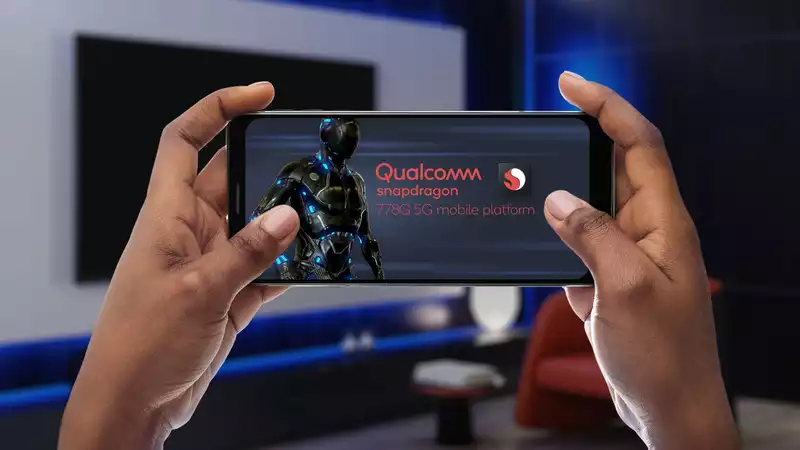After the first wave of 5G phones debuted with astronomical price tags a few years ago, more affordable 5G handsets are becoming more common. Qualcomm hopes to continue this by producing more silicon designed for handsets that are not one or two steps behind the flagship models. [The chipmaker today (May 19) unveiled the Snapdragon 778G 5G system-on-chip as part of its annual 5G Summit. The new chipset follows Qualcomm's March announcement of the Snapdragon 780G, which gives handset makers a new option for high-end and mid-range devices.
The Snapdragon 778G is not intended for flagship devices like Samsung's Galaxy S series, but it does offer some performance improvements. Qualcomm promises a 40% performance boost with the Kryo 670 CPU compared to the Snapdragon 768G released a year ago. Similarly, the Adreno 642L GPU will render graphics 40% faster.
The topic here, however, is the added 5G connectivity. The Snapdragon X53 5G modem in the chipset works with both millimeter wave and sub-6GHz 5G networks, so phones with the Snapdragon 778G should be available on multiple carriers.
Qualcomm is also touting the camera, gaming, and AI capabilities of its latest silicon, claiming that the Snapdragon 778G will bring premium features to phones that are not necessarily flagship devices. [The Snapdragon 778G is the first Qualcomm 7 series chipset to feature triple ISPs: the Spectra 570L image signal processor captures video from three cameras simultaneously, including the phone's main camera, an ultrawide camera, and a selfie camera It can It also supports computational HDR video capture, which improves the color, contrast, and detail of video captured by Snapdragon 778G-powered smartphones. [In addition to faster graphics rendering, the Snapdragon 778G includes the Snapdragon Elite Gaming feature, a new feature of the 7 series chips that allows mobile games to run faster at higher resolutions Variable Rate Shading support and Gaming Quick Touch. This latte feature reduces touch latency, and Qualcomm promises a 20% improvement in responsiveness.
Like the Snapdragon 780G, the 778G is powered by Qualcomm's 6th generation AI engine, which doubles performance over the previous generation. This allows it to support features such as blurring the background of video calls and adjusting call volume based on ambient noise.
Many handset manufacturers have announced that they will use the Snapdragon 778G in their upcoming handsets. Motorola joins several China-based handset makers, including Oppo, Xiaomi, Realme, Honor, and iQOO. Qualcomm expects Snapdragon 778G 5G-powered phones to begin appearing in the coming months.
This is good news for consumers looking for a powerful 5G-enabled phone that is not necessarily overpriced, which was true when the first 5G phones started appearing two years ago, but costs have come down over time.
Samsung recently announced three new 5G phones, all under $500, and OnePlus' Nord handset is now 5G-ready on a budget, although phones with the Snapdragon 778G may not sell at that price, it should be cheaper than flagships like the Galaxy S21 and OnePlus 9.
The Snapdragon 778G announcement is just one of the announcements Qualcomm made during the opening of the 5G Summit. Qualcomm also announced upgraded Snapdragon X65 5G modem features and included enhanced mmWave capabilities, including mmWave support in standalone mode. This is seen as a boost to the adoption of high-speed 5G technology in places like China.
In addition, Qualcomm announced the X65 and X62 reference designs, allowing device manufacturers to add 5G connectivity to other electronic devices such as PCs, laptops, mixed reality headsets, and broadband devices.










Comments